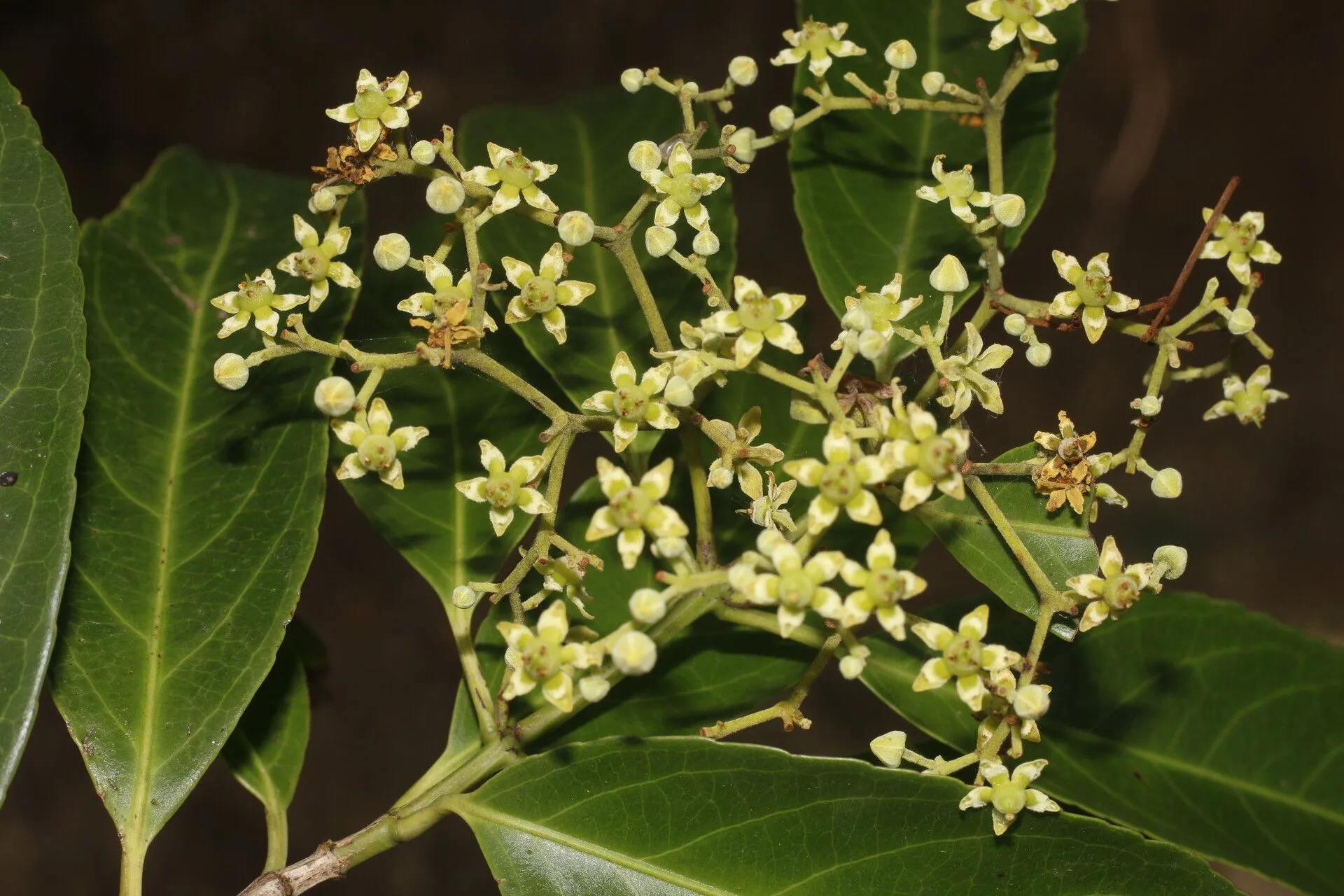
Author: L.
Bibliography: Sp. Pl.: 1191 (1753)
Year: 1753
Status: accepted
Rank: species
Genus: Hippocratea
Vegetable: False
Observations: Trop. & Subtrop. America
The Medicine Vine, scientifically known as Hippocratea volubilis, is a remarkable plant species belonging to the Celastraceae family. Known for its presence in tropical and subtropical regions of America, this plant has garnered attention not only for its biological characteristics but also for its potential medicinal properties.
Hippocratea volubilis is a climbing vine that thrives in warm climates, often found ensnaring itself around trees and structures in its natural habitat. This plant features elongated, sturdy stems that can support its weight as it ascends. The leaves are typically glossy, green, and oval-shaped, providing a lush canopy that is both visually appealing and crucial for photosynthesis.
The flowers of this vine are small yet abundant, often growing in clusters. They possess a delicate charm with white petals that contrast beautifully against the greenery. Following the flowering phase, the plant produces distinctive seed pods. These are flattened and winged, demonstrating an evolutionary adaptation for dispersal by wind.
The Medicine Vine is widely distributed across tropical and subtropical regions of America. This extensive range underlines its adaptability to various environmental conditions. It thrives in fertile, well-drained soils and benefits greatly from high humidity and ample sunlight, common in these regions. Often found in rainforests and along riverbanks, Hippocratea volubilis plays an integral role in its ecosystem, offering both shelter and food to various species.
As its common name suggests, the Medicine Vine holds significant value in traditional medicine. Indigenous communities in its native range have long utilized various parts of the plant for therapeutic purposes. Extracts from its stems, leaves, and roots are believed to possess anti-inflammatory, analgesic, and antimicrobial properties. While scientific research is still catching up, the anecdotal evidence and centuries-old practices highlight its potential as a natural remedy.
Conserving the Medicine Vine is essential not only because of its medicinal attributes but also for maintaining the ecological balance in its habitats. It is crucial to monitor and protect natural populations from over-harvesting and habitat destruction, ensuring that this invaluable plant remains a thriving component of its milieu.
In conclusion, Hippocratea volubilis, or the Medicine Vine, is a fascinating species with a significant role in both traditional medicine and its natural environment. Its botanical features, adaptive distribution, and potential health benefits make it a subject of interest for botanists, ecologists, and medical researchers alike.
Por: cipó-de-borracha, cipó-preto, sipopirã
Eng: medicine vine
En: Medicine vine, Medicine-Vine
Pt: Cipó-de-borracha, Cipó-preto, Sipopirã
© copyright of the Board of Trustees of the Royal Botanic Gardens, Kew.
© copyright of the Board of Trustees of the Royal Botanic Gardens, Kew.
© copyright of the Board of Trustees of the Royal Botanic Gardens, Kew.
Taken Mar 23, 2017 by Nelson Zamora Villalobos (cc-by-nc)
Taken Mar 23, 2017 by Nelson Zamora Villalobos (cc-by-nc)
Taken Mar 23, 2017 by Nelson Zamora Villalobos (cc-by-nc)
Taken Apr 10, 2002 by Frédéric Dupont (cc-by-sa)
Taken Jan 1, 1900 by EOL − Daniel H. Janzen (cc-by-nc-sa)
Taken Jun 9, 2018 by Nelson Zamora Villalobos (cc-by-nc)
Taken Jun 9, 2018 by Nelson Zamora Villalobos (cc-by-nc)
Taken Jun 9, 2018 by Nelson Zamora Villalobos (cc-by-nc)
Taken Feb 16, 2015 by Nelson Zamora Villalobos (cc-by-nc)
Taken Feb 16, 2015 by Nelson Zamora Villalobos (cc-by-nc)
Taken Sep 1, 2000 by Daniel Barthelemy (cc-by-nc)
Taken Mar 23, 2017 by Nelson Zamora Villalobos (cc-by-nc)
Taken Mar 23, 2017 by Nelson Zamora Villalobos (cc-by-nc)
Taken Feb 16, 2015 by Nelson Zamora Villalobos (cc-by-nc)
Taken Mar 23, 2017 by Nelson Zamora Villalobos (cc-by-nc)
Taken Jun 9, 2018 by Nelson Zamora Villalobos (cc-by-nc)
Taken Jun 9, 2018 by Nelson Zamora Villalobos (cc-by-nc)
Taken Jun 9, 2018 by Nelson Zamora Villalobos (cc-by-nc)
Taken Jan 1, 1900 by EOL − Daniel H. Janzen (cc-by-nc-sa)
Taken Jan 1, 1900 by EOL − Daniel H. Janzen (cc-by-nc-sa)
Taken Oct 23, 2008 by AMAP Lab – Guyane 2022 (cc-by-sa)
Taken Oct 23, 2008 by AMAP Lab – Guyane 2022 (cc-by-sa)
Taken Oct 23, 2008 by AMAP Lab – Guyane 2022 (cc-by-sa)
Taken Oct 23, 2008 by AMAP Lab – Guyane 2022 (cc-by-sa)
Taken Oct 23, 2008 by AMAP Lab – Guyane 2022 (cc-by-sa)
Taken Jan 1, 1900 by EOL − Acevedo, P. (cc-by-nc-sa)
Taken Jan 1, 1900 by EOL − Acevedo, P. (cc-by-nc-sa)
Growth habit>: Vine
Family: Myrtaceae Author: (F.Muell.) K.D.Hill & L.A.S.Johnson Bibliography: Telopea 6: 402 (1995) Year: 1995 Status:…
Family: Rubiaceae Author: Pierre ex A.Froehner Bibliography: Notizbl. Bot. Gart. Berlin-Dahlem 1: 237 (1897) Year:…
Family: Sapindaceae Author: Koidz. Bibliography: J. Coll. Sci. Imp. Univ. Tokyo 32(1): 38 (1911) Year:…
Family: Asteraceae Author: A.Gray Bibliography: Pacif. Railr. Rep.: 107 (1857) Year: 1857 Status: accepted Rank:…
Family: Fabaceae Author: Medik. Bibliography: Vorles. Churpfälz. Phys.-Ökon. Ges. 2: 398 (1787) Year: 1787 Status:…
Family: Aspleniaceae Author: (Cav.) Alston Bibliography: Bull. Misc. Inform. Kew 1932: 309 (1932) Year: 1932…